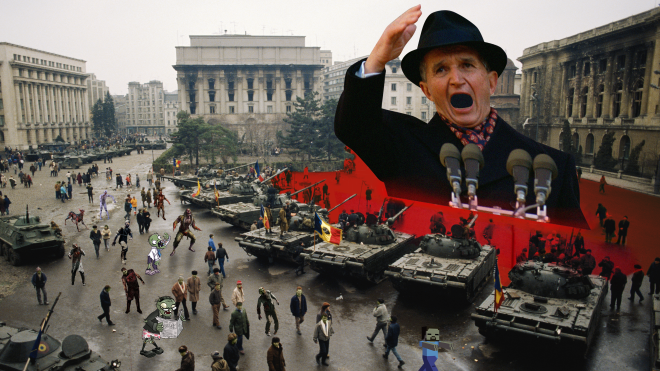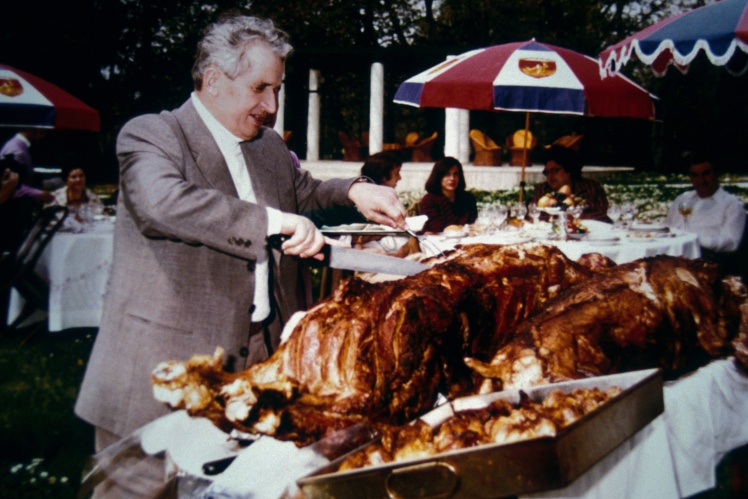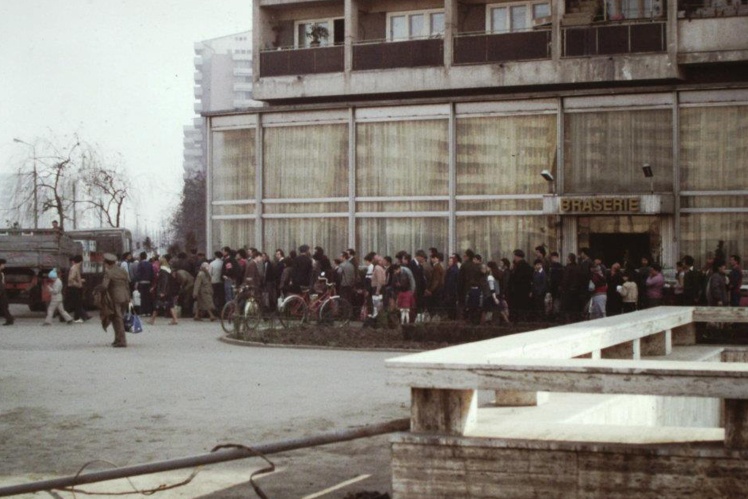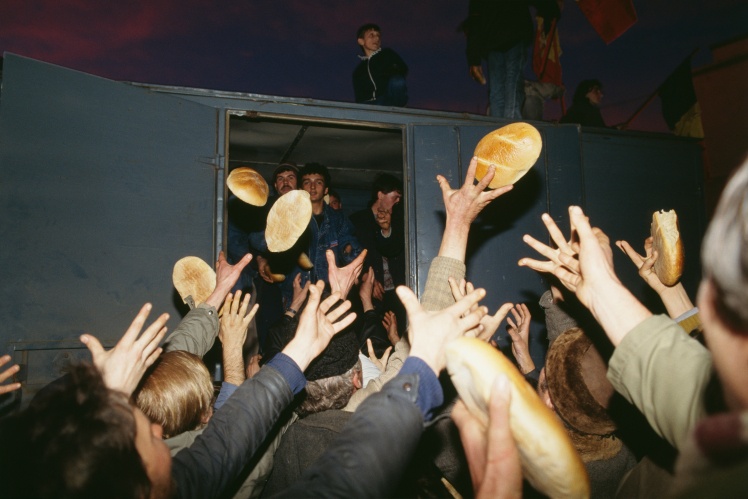Around noon on December 21, 1989, a one hundred thousand rally aimed to demonstrate people’s support of Nicolae Ceaușescuʼs regime was gathered in front of the Central Committee building in Bucharest. The dictator went out onto the balcony and started his speech on the threat to Romanian independence. Suddenly the crowd began to blow up firecrackers and shout “Jos dictatorul!” (“Down with the dictator”). Ceaușescu fell silent in surprise, the guards tried to take him away from the balcony, while his wife was trying to calm people down.
The TV temporarily cut live broadcasting “due to a technical failure”. When the crowd settled a little, Ceaușescu (on his wife’s advice) promised to raise salaries and pensions starting January 1 next year. After that, his entourage took the bewildered dictator off the balcony.
However, the crowd in the square did not disperse. By the evening the pro-government rally turned into the anti-government riots. Clashes erupted in the streets of Bucharest. Troops were brought into the city, and the soldiers started to go over to the protesters’ side. Only “securitate” agents, the secret police, remained loyal to the regime. The demonstrators and the army took up the Bucharest TV center and announced: “Brothers Romanians! The dictatorship has fallen!”. And the protests broke out across the country.
During protests in Bucharest in 1989, demonstrators cut out the Soviet coat of arms from the central part of the Romanian flag.
Pascal J Le Segretain / Contributor
On the afternoon of December 22, when the demonstrators were approaching the Central Committee building, a helicopter landed on its roof. Ceaușescu and his wife used the helicopter to flee the Romanian capital. But they didn’t manage to get far away. They were arrested near hundred kilometers from the city and taken to the military unit of a small town Târgoviște.
By December 25, the fightings in Bucharest were almost over. The “Securitate” head ordered his subordinates to “serve the state and the people”, in other words, to stop resistance. On the same day, the tribunal to try Ceaușescu and his wife began in the Târgoviște military unit. It only lasted for an hour and a half. The convicts were found guilty of genocide, undermining the state institutions and national economy, and sentenced to death. At 2:50 pm Nicolae and Elena Ceaușescu were shot near the soldiersʼ lavatory wall.
A Romanian soldier watches Ceaușescu’s body on television after being shot, on December 25, 1989.
Nicolae Ceaușescuhad ruled Romania for 24 years, from 1965 to 1989. Of all the socialist bloc countriesʼ leaders, he pursued the most independent from USSR policy. Gradually, a cult of Ceaușescu’s personality began to be created in Romania. In the 1970s, he received the titles “Great Leader”, “Genius of the Carpathians”, “Full-flowing Danube of Reason”.
Relatives of Ceaușescu held key positions in power. This was especially true of his wife Elena, who actually became the second person in the state, and propaganda called her “the mother of all Romanians”. Any dissent was suppressed by the “securitate” secret police, which read letters, tapped phones, apartments. Undesired people were arrested and tortured in prisons. People were so intimidated that they were afraid to speak not only with foreigners but even with citizens of other countries of the socialist camp.
To make the country economically independent from the USSR, Ceaușescu uncontrollably took loans from Western countries. By the early 1980s, Romania owed $13 billion in loans. To pay them off, Ceaușescu introduced an austerity regime in the country. There were cards for gasoline, bread, milk. Water, heating, and electricity were provided for several hours a day. By early 1989, the loans were repaid, but Romania had gone from one of the fastest-growing economies to one of the poorest countries in Europe.
Photo from Nicolae Ceaușescu’s family album, 1980s. The line for vegetable oil in Bucharest, 1986. Bread is thrown to the crowd during protests in Timișoara, on December 22, 1989.
Patrick Robert - Corbis / Contributor; Wikimedia; Langevin Jacques / Contributor
By this time, Ceaușescu was living in a parallel reality in a luxurious presidential palace. He was confident in people’s support and rejoiced at the fabricated reports on the national economy’s growth rate, which were given to him by intimidated officials. In his last interview with Newsweek in August 1989, he was genuinely surprised by questions about empty store shelves and the cult of personality.
On December 16, anti-government protests began in Timișoara. After the first clashes with law enforcement officers, the demonstrators began to smash the local offices of the Communist Party. But since many ethnic Hungarians lived in this region, Ceaușescu decided that they were plotting against him in Budapest. He ordered the army to aim missiles at Hungary and the “Securitate” to suppress the protests in Timișoara by force. The demonstrators were shot with machine guns. The exact number of killed is still unknown, many are missing.
On December 20, Ceaușescu appeared on national television and called the protests in Timișoara “a trick of hooligan elements organized with the support of imperialist circles and spy services of various foreign countries with the aim of destabilizing the situation in the country”.
The dictator ordered the mayor of Bucharest, Barbu Petrescu, to herd the workers to a large-scale rally in the central square to publicly condemn the protests in Timișoara. On the morning of December 21, Ceaușescu declared a state of emergency in Timiș County. And by noon he went out onto the balcony of the building of the Central Committee of the Party in front of a rally of many thousands in full confidence in the people’s support.
«Babel» needs support from its readers now more than ever. If the work we do is important to you, please, send us a donation!
School students rip portraits of Nicolae Ceaușescu out of books on January 1, 1990.
Barry Lewis / Contributor
Translated from Ukrainian by Olya Panchenko.



